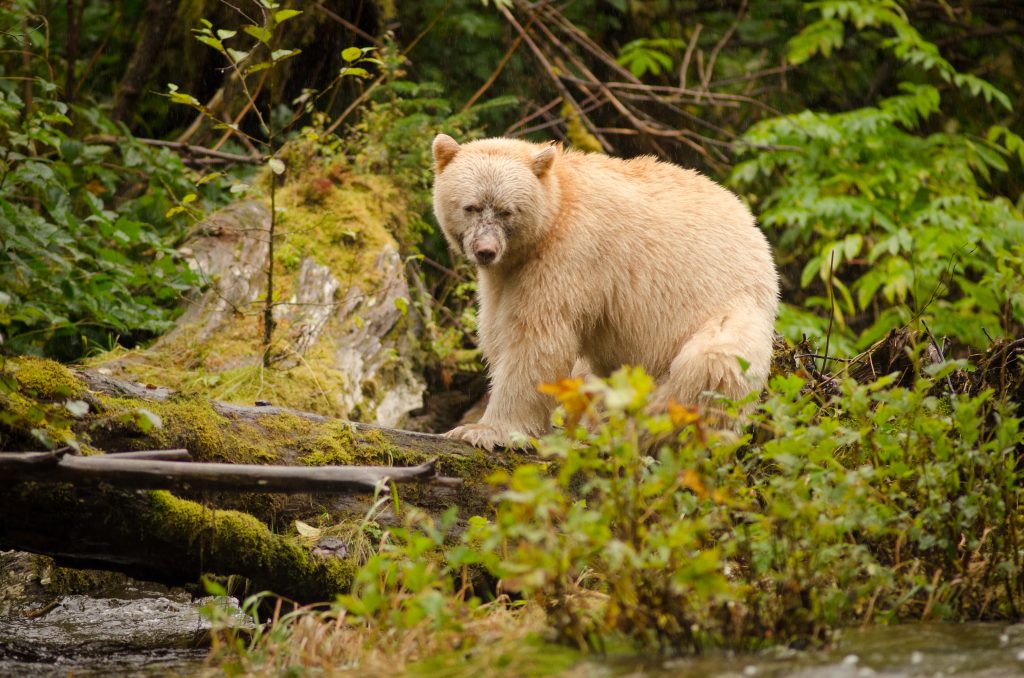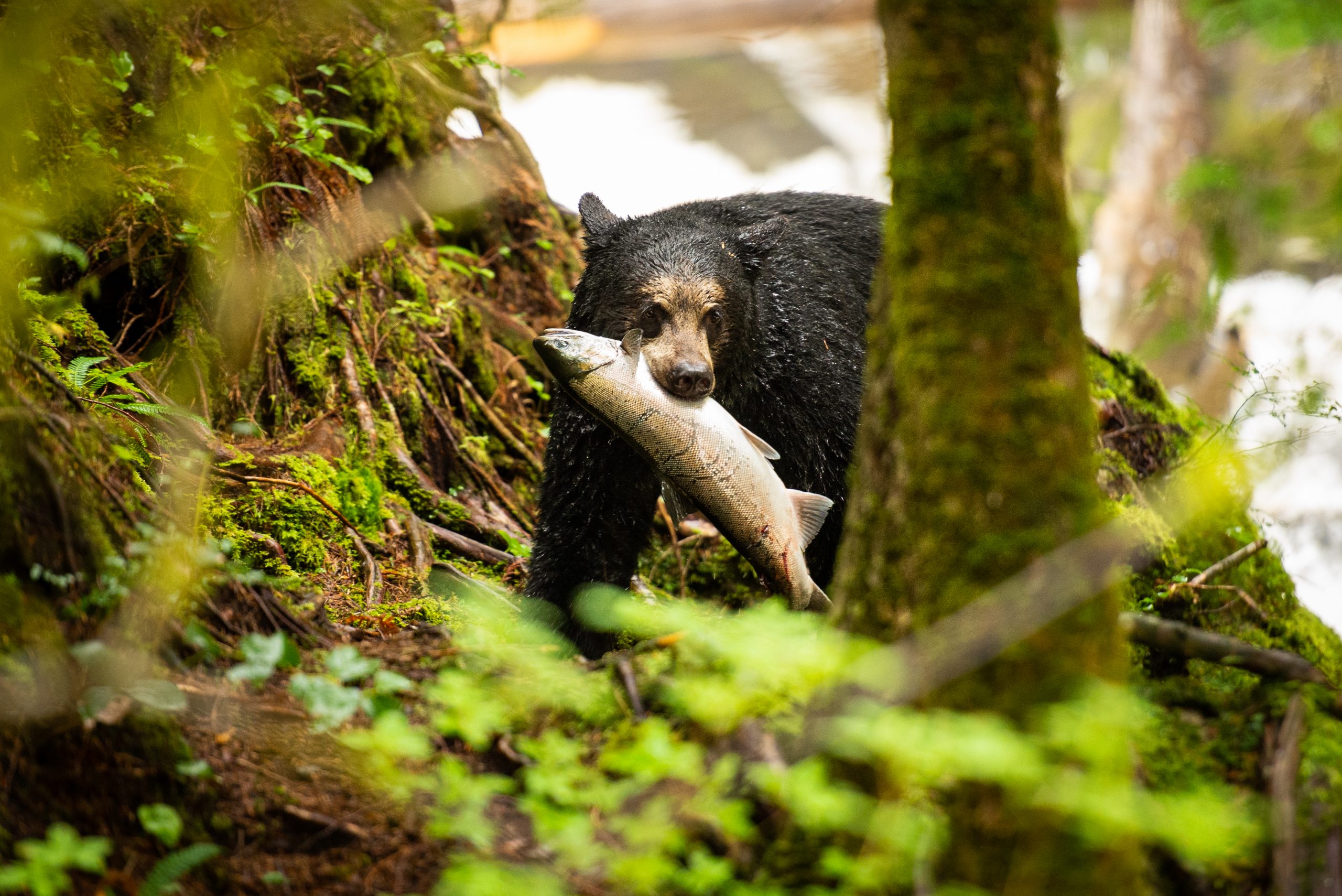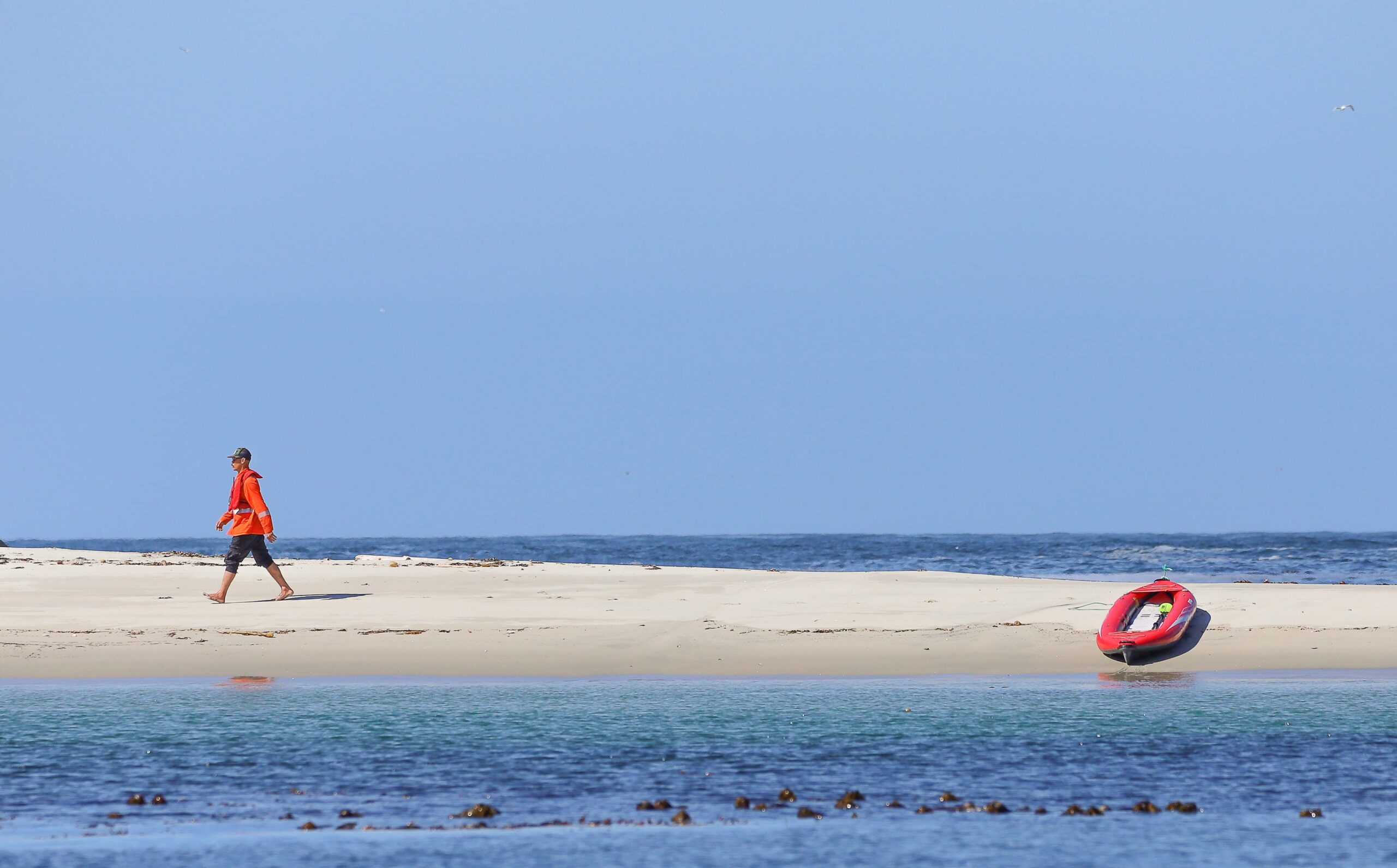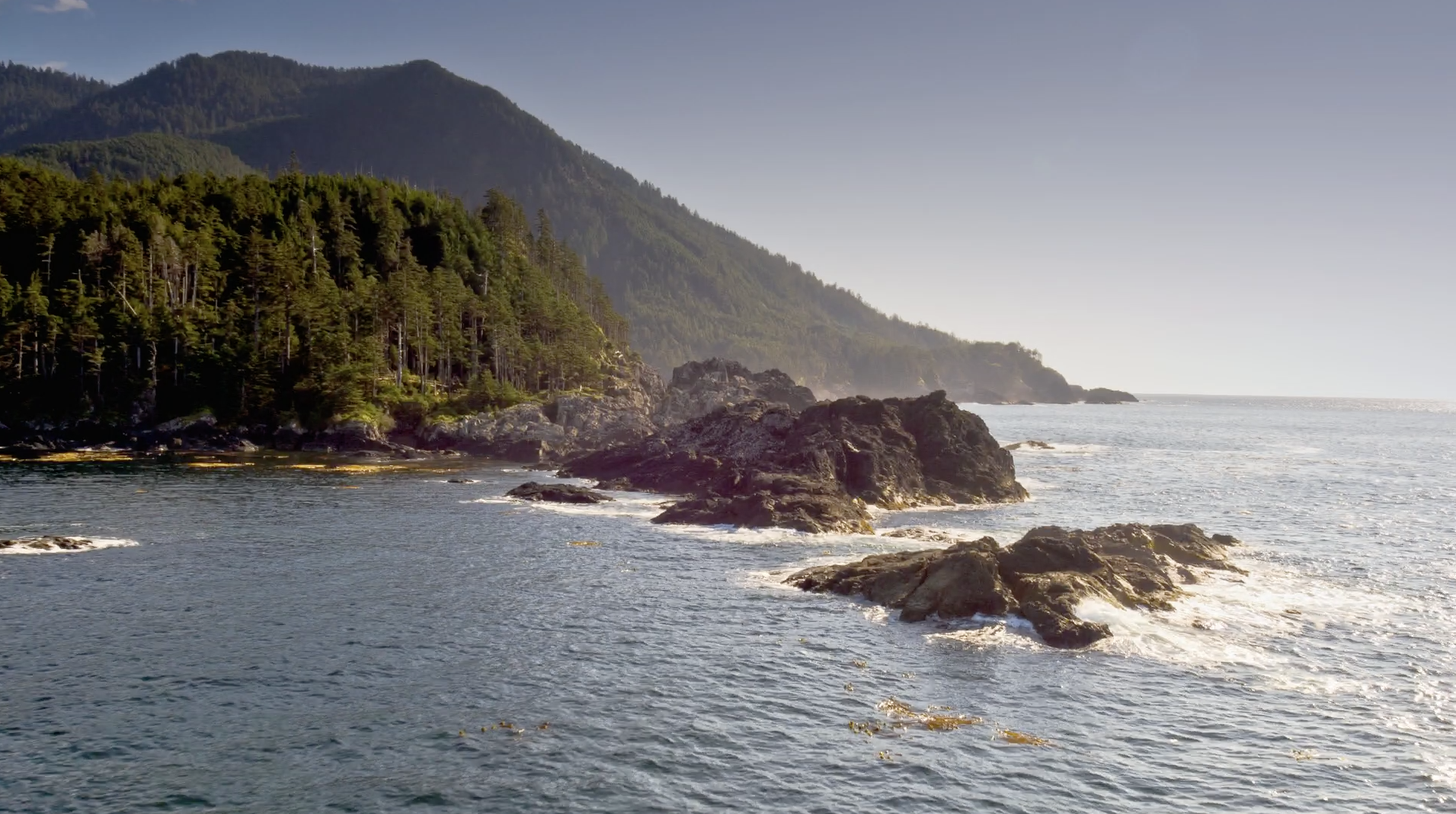The Kitasoo Xai’xais and Gitga’at First Nations are celebrating a new ban on black bear hunting in their territories near the communities of Klemtu and Hartley Bay, where there’s the highest concentration of spirit bears in this part of the world.
Spirit bears, also known as Kermode bears, are black bears with a completely white coat. The bear’s white coat is the result of a rare genetic mutation. It’s impossible to know which black bears carry the white gene and both parents have to carry a recessive gene, in order to produce the spirit bear.
Generally, spirit bears have been genetically isolated onto the islands in Kitasoo Xai’xais and Gitga’at territories, which has allowed their gene pool to continue to thrive. They are not albinos and have black noses and dark eyes, similar to black bears. Every time a black bear is shot in the region, it could be carrying the recessive copy of the gene that produces the spirit bear.

‘This is exciting news’
Spirit bears carry a lot of cultural significance for the Kitasoo Xai’xais people, says Chief Councillor Doug Neasloss, whose traditional name means ‘white bear.’ While it has been illegal to kill a spirit bear since the early 20th century, the Nations have been working for years to provide detailed evidence that black bear hunting also threatens conservation of spirit bears and their communities wellbeing.
“I’ve been working with bears for 20 years. We’ve always known them to be special and unique, especially the Spirit Bear,” Neasloss says. “This is something we’ve been talking about for some time. We started this work five years ago, and now the hunt is officially closed. We’re super excited about it.”
On July 1, the provincial government released its Hunting and Trapping Regulations Synopsis, which included the new closure of the black bear hunting areas, following a joint proposal from the Kitasoo Xai’xais Stewardship Authority (KXSA) and the Gitga’at Ocean and Lands Department (GOLD).
The ban outlaws black bear hunting in areas that are most significant for spirit bear conservation — regions where black bears have the highest likelihood of carrying the recessive gene and where black bear populations with spirit bears have low genetic diversity.
Dr. Christina Service, a wildlife biologist with the KXSA and adjunct assistant professor in the School of Environmental Studies at the University of Victoria says her and her team started their bear monitoring project about ten years ago. Their intent, she says, was to gather information to support stewardship decisions around bears, to get a better understanding of what bears need to thrive, so the Nations could make policy decisions to support that evidence.
“Every spring we collected their hair. From that hair, have been able to find out lots of information. We were able to get a good sense of where we find that rare genetic variation that controls that white fur in spirit bears,” Service explains. “From the science side, this is a rare and great example where Nations have invested heavily in research and hold the most comprehensive and impressive data sets we have for black bears. It’s an example of Nations leading the way in evidence-based policy management.”
The decision also supports the economic wellbeing of the Nations, both which run bear-viewing businesses that are major employers for their people and revenue earners for their communities.
“This is exciting news for Gitga’at Nation and our neighbouring Nation Kitasoo Xai’xais,” says Marven Robinson, elected councillor of the Gitga’at Nation who runs an adventure tours company that explores river valleys near Hartley Bay in search of spirit bears. Spirit bears are referred to as moksgmol, meaning ‘white bear,’ in Tsimshian, according to KXSA’s press release.
“There was a lot of work done to get to this point, and it has been a long time coming. The moksgmol is highly revered by the Gitga’at people and was never talked about until we needed to ensure its protection,” says Robinson.
Neasloss, who has played a major role in new recognition for his Nation’s Guardians program and the announcement of a new Marine Protected Area, says he sees the ban as “an encouraging example of government-to-government collaboration” and looks forward to continuing to work with the Fish and Wildlife Branch on other regulation changes.


